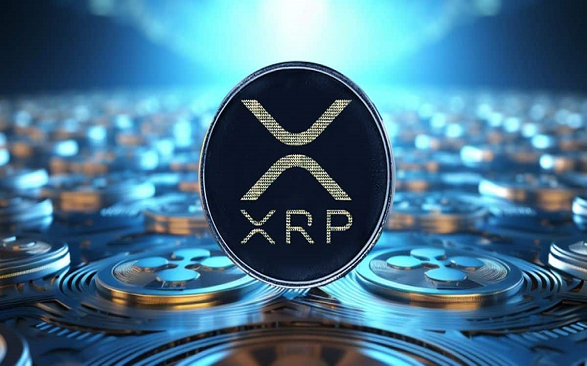Ethereum’s inflation rate, which determines the creation and supply of new Ether (ETH), significantly impacts the network’s economics, security, and user experience. A balanced rate ensures stability and predictability, while excessive inflation can lead to decreased purchasing power, reduced miner incentives, and increased volatility, making monitoring and management crucial for a sustainable ecosystem.
Ethereum’s Inflation Mechanism
Ethereum’s inflation mechanism is designed to balance the creation of new Ether (ETH) with the network’s growth and security needs. The inflation rate is determined by block rewards and transaction fees, which are the primary sources of new ETH creation. Every time a new block is added to the Ethereum blockchain, a certain number of ETH is created and awarded to the miner who validated the block. This block reward is set to decrease over time, which helps to slow down the inflation rate.
Transaction fees also play an important role in Ethereum’s inflation mechanism. When users make transactions on the network, they must pay a fee to incentivize miners to prioritize their transactions. These fees are also a source of new ETH creation, as they are added to the block reward. The total amount of ETH created through block rewards and transaction fees determines the overall inflation rate. The Ethereum Improvement Proposal (EIP) 1559, implemented in 2021, introduced a burning mechanism that reduces the amount of ETH in circulation by burning a portion of the transaction fees, further impacting the inflation rate. This complex mechanism aims to strike a balance between incentivizing miners, securing the network, and maintaining a stable and predictable supply of ETH.
Read also:
U.S SEC drops investigation on Ether: What It Means for Ethereum’s future
The Recent Inflationary Pressure
As of 5 August 2024, the Ethereum network has seen a total of 465,657 ETH burned since the beginning of the year. Since the introduction of EIP-1559 in June 2021, a cumulative total of 4.36 million ETH has been burned.
However, the burning rate has slowed down significantly in 2024, with a notable decline of 67.7% in Q2 (107,725 ETH), compared to Q1 (333,555 ETH). The monthly burning figures also reveal a downward trend, with a record low of 17,114 ETH in July 2024, representing a 35% decrease from June.
In contrast, March 2024 saw a monthly high of 147,620 ETH, but this pales in comparison to the all-time high of 398,061 ETH burned in January 2022, during the peak of the previous bull market.
Ethereum’s recent inflationary pressure can be attributed to various factors, including increased demand for Ether (ETH) and network congestion. As more users and decentralized applications (dApps) join the network, the demand for ETH rises, leading to increased transaction fees and, subsequently, higher inflation.
Read also:
Ethereum and Altcoins: What are the Opportunities in the Altcoin Market?
Ethereum’s Inflationary Trend
Since the start of 2024, 540,958 ETH have been added to the network, while 465,657 ETH have been burned, resulting in a net total of 75,301 ETH added to the network. This trend is attributed to increased network activity and a surge in ETH emissions.
Q1 2024 was deflationary, with 220,454 ETH emitted and 333,555 ETH burned, resulting in the removal of 113,100 ETH from Ethereum’s supply. However, Q2 2024 saw a reversal, with 228,543 ETH emitted and 107,725 ETH burned, adding 120,818 ETH to the blockchain.
Top ETH Burners
Uniswap remains the largest ETH burner, with 71,915 ETH burned in 2024. However, its burn rate dropped by 72.4% QoQ. The top 10 ETH burners accounted for 39.2% of all ETH burned in 2024, with ETH transfers and Tether (USDT) being the second and third largest contributors, respectively.
The top 10 biggest ETH burners from 1 January 2024 to 5 August 2024 are:
- Uniswap – 71,915.2 ETH
- ETH Transfers – 33,538.0 ETH
- Tether – 23,332.4 ETH
- Banana Gun – 11,060.3 ETH
- Maestro – 9,554.2 ETH
- MetaMask – 9,160.2 ETH
- Circle – 6,783.4 ETH
- 1inch – 6,484.1 ETH
- Scroll – 6,307.9 ETH
- MEV Bots – 4,585.4 ETH
Read also: What is Ethereum?
Potential Effects on Ethereum’s Price and Adoption
The inflationary pressure on Ethereum has significant implications for the network and its users. A sustained increase in inflation can lead to a decrease in ETH price, making it less attractive to investors and users. This, in turn, can slow down ETH adoption rates, hindering the growth of the ecosystem.
Inflation can negatively impact ETH price by reducing the value of each ETH. As more ETH is created, the supply increases, potentially leading to a decrease in demand and, subsequently, a drop in price. This can make Ethereum less competitive compared to other cryptocurrencies, ultimately affecting its adoption rates.
Inflation affects various users of the Ethereum network differently. Miners may benefit from increased transaction fees, but holders of ETH may see the value of their assets decrease. Also, users who rely on Ethereum for transactions may face higher fees, making the network less accessible.
Towards a stable and predictable supply of ETH
Ethereum’s inflationary pressure is a critical issue that requires attention from developers, users, and stakeholders. Understanding the reasons behind the inflation and its implications is crucial for mitigating its effects. As the Ethereum network continues to evolve, it is important to monitor inflation rates and implement measures to maintain a stable and predictable supply of ETH. By doing so, Ethereum can ensure a healthy ecosystem, supporting its growth and adoption.
Read also: Ether is likely to reach new lows near $1,600, say analysts.
Solomon Victor is a Technical Analyst who is also knowledgeable about various aspects of blockchain and cryptocurrency.
Discover more from Crypto Asset Buyer
Subscribe to get the latest posts sent to your email.



